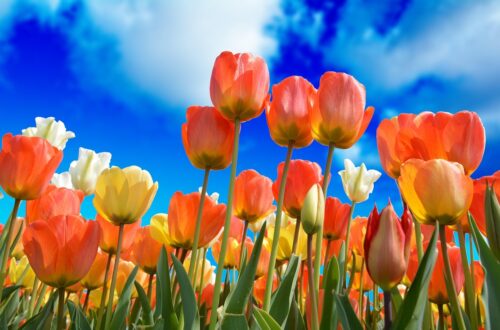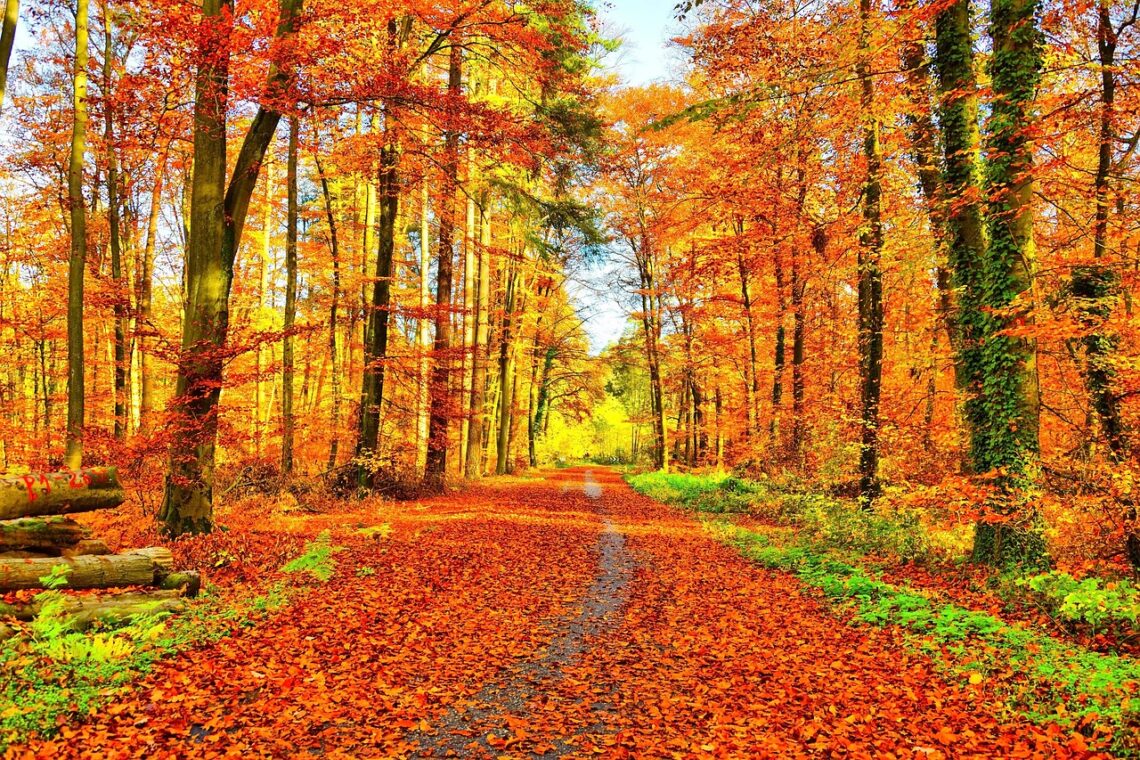
35+ Amazing Facts About Deciduous Forests You Need to Know
Facts About Deciduous Forests
When curiosity strikes about the natural world, one of the most intriguing ecosystems to explore is the deciduous forest. Across the globe, people have marveled at the way broad-leafed trees shed their leaves each year, preparing for the winter season and welcoming the return of new leaves in spring. Because of these rhythms, facts about deciduous forests offer more than just scientific knowledge; they tell stories of resilience, adaptation, and balance.
Interestingly, temperate deciduous forests can be found in eastern North America, western Europe, northeastern Asia, and even parts of South America. These areas experience distinct seasons, including cold winters and warm summers.
Therefore, the temperate deciduous forest biome provides a living classroom where nature’s seasonal cycles can be observed closely. Moreover, it is not just the trees that capture attention; it is also the animals, the climate, and the interaction between all elements.
Since many readers wonder what makes these forests unique, this article will highlight verified, captivating facts about deciduous forests while weaving in ecological, cultural, and environmental insights. By the end, the richness of these ecosystems will feel both astonishing and deeply significant.
Facts About Deciduous Forests Snippet
- Location: Found in eastern North America, western Europe, northeastern Asia, and South America.
- Climate: Average temperature ~50°F (10°C) with distinct seasons.
- Flora: Broad-leafed trees, woody vines, shrubs, and colorful autumn leaves.
- Fauna: Black bears, white-tailed deer, foxes, and migratory birds.
- Layers: Canopy, understory, and forest floor with diverse species.
- Threats: Acid rain, deforestation, and climate change.
- Importance: Carbon storage, soil fertility, cultural inspiration, and biodiversity support.
What Are Deciduous Forests?

Deciduous forests are woodlands dominated by broad-leafed trees that shed their leaves during a period of dormancy. Because these forests are largely found in temperate regions, they are influenced by cold air masses in winter months and warmer, humid conditions during summer. Consequently, the leaves of deciduous trees change color in autumn, creating landscapes of brilliant reds, oranges, and yellows.
Key Characteristics
- Four distinct seasons: spring, summer, autumn, and winter
- Average temperature ranges between 10°C and 21°C
- Rich forest floor that supports woody vines, shrubs, and smaller plants
- Period of dormancy during cold winters
- Presence of both common animals like white-tailed deer and predators like black bears
Moreover, the main types of deciduous forests can be divided into temperate deciduous forests and subtropical deciduous forests. While temperate forests are more common in the eastern half of North America and western Europe, subtropical deciduous forests are found in warmer regions that still experience a dry season.
Climate and Geography of Deciduous Forests
Because climate is central to the identity of these biomes, it is important to understand the interplay of temperature, rainfall, and geography.
Seasonal Patterns
- Winter months: Cold winters dominate with snowfall in some areas, particularly in snow forests near polar regions.
- Spring: New leaves burst forth, marking renewal.
- Summer: Warm, humid conditions sustain vigorous growth.
- Autumn: Leaves of deciduous trees change color before falling, leaving behind bare branches.
According to the National Park Service (NCR Parks, 2023), the average temperature in temperate deciduous forests hovers around 50°F (10°C), although summers may reach 86°F (30°C). This fluctuation illustrates the dramatic contrasts these regions face, and it explains why animals and plants have evolved strategies to cope with change.
Global Distribution
- Eastern North America: Home to extensive forests, particularly in the eastern United States and Canada.
- Western Europe: Includes regions known for ancient, protected woodlands.
- Northeastern Asia: Hosts deciduous forests influenced by monsoon climates.
- South America: Contains subtropical deciduous forests shaped by a dry season.
Therefore, it becomes clear that while the temperate deciduous forest biome dominates certain latitudes, subtropical counterparts add diversity to the global picture.
Flora in Deciduous Forests

Trees in these forests play the leading role, but smaller plants, shrubs, and woody vines are equally important in shaping biodiversity.
Height of the Trees
The height of the trees typically ranges from 60 to 100 feet, forming a dense canopy that allows filtered sunlight to reach the forest floor. Since deciduous forests feature multiple layers, the forest floor is teeming with mosses, ferns, and fungi.
Seasonal Adaptations
- Leaves change from a vibrant green color to warm shades during autumn.
- Trees shed their leaves to conserve water during the cold season.
- Period of dormancy protects them from harsh winter conditions.
Because acid rain has been a threat in some regions, particularly in industrialized areas of western Europe, tree health has been compromised in certain zones. Nevertheless, resilience continues to define these ecosystems, proving their adaptability.
Fauna of Deciduous Forests
When animals of deciduous forests are observed, the variety can be astonishing. Because these ecosystems provide distinct seasons, wildlife must adapt to survive both warm summers and cold winters. Therefore, facts about deciduous forests often highlight the incredible adaptability of the species that live within them.
Common Animals
Among the most recognizable species are white-tailed deer, black bears, foxes, and squirrels. Insects, amphibians, and birds are also abundant, creating a complex food web. Moreover, common animals vary by region, with some adapted to the snow forests near polar regions and others thriving in subtropical deciduous forests.
Seasonal Adaptations
- Winter months: Many animals hibernate or migrate to escape cold air masses.
- Spring: Food becomes abundant, and new leaves offer fresh shelter.
- Summer: Insects thrive, providing food for birds and mammals.
- Autumn: Animals prepare for dormancy or migration as leaves of deciduous trees change color.
Because cold winters can be harsh, animals such as black bears hibernate, while white-tailed deer grow thicker coats to withstand frigid air. Birds like warblers migrate south, avoiding the winter season entirely.

Layers of the Deciduous Forest
When exploring facts about deciduous forests, the structure of the forest itself becomes important. Trees, shrubs, and ground plants are organized into layers, each supporting unique species.
Canopy Layer
The tallest trees form the canopy, blocking sunlight and providing homes for birds, insects, and climbing mammals.
Understory Layer
Below the canopy, smaller trees and shrubs thrive. Because less light filters through, plants here are shade-tolerant.
Forest Floor
The forest floor is a world of its own. Rich in decomposing matter, it supports fungi, moss, and woody vines. Moreover, larger animals like white-tailed deer and predators such as black bears are often found roaming at this level.
Importance of Deciduous Forests
Deciduous forests play a crucial role in balancing ecosystems and supporting human life. Because they regulate carbon dioxide and provide oxygen, they directly impact climate stability.
Ecological Value
- Provide habitats for countless species
- Maintain soil fertility with leaf litter
- Protect against erosion
- Store carbon and regulate air quality
Human Connection
Historically, people have relied on temperate deciduous forests for timber, food, and cultural inspiration. Moreover, protected areas like NCR Parks in the eastern United States ensure that these ecosystems remain accessible for education and recreation.
Regional Variations
Because deciduous forests are spread across different continents, their characteristics vary depending on local climate and geography.
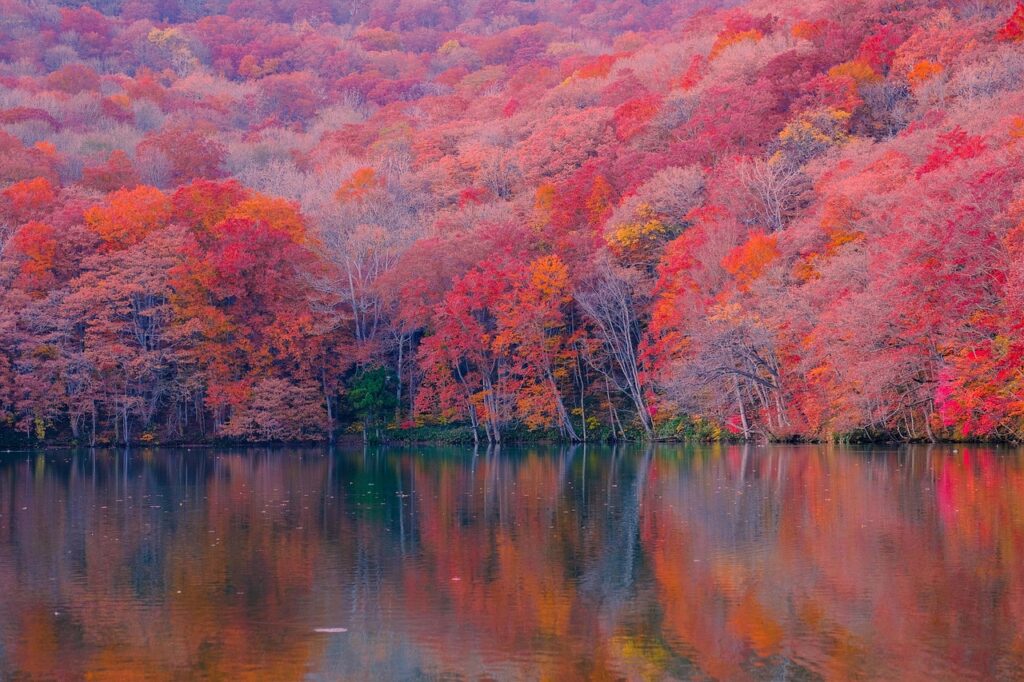
Eastern North America
In the eastern half of North America, deciduous forests dominate, with a mix of broad-leafed trees and a rich diversity of wildlife. Moreover, the eastern United States is particularly known for vibrant autumn landscapes when the leaves of deciduous trees change color.
Western Europe
Western Europe features forests influenced by centuries of human settlement, yet many protected areas preserve the natural character of temperate forests. Acid rain, however, has posed serious environmental challenges.
Northeastern Asia
Northeastern Asia’s deciduous forests experience monsoons, shaping their seasonal patterns and species diversity.
South America
In South America, subtropical deciduous forests experience a pronounced dry season. Because of this, trees shed their leaves not only in winter months but also to conserve water during droughts.
Unique Facts About Deciduous Forests
- Deciduous forests experience four distinct seasons.
- The average temperature is about 50°F (10°C).
- Trees grow to a height of 60 to 100 feet.
- Leaves change from green color to red, orange, and yellow in autumn.
- Common animals include black bears, white-tailed deer, and foxes.
- Forest layers include the canopy, understory, and forest floor.
Threats to Deciduous Forests
Because deciduous forests cover vast regions, they face numerous environmental challenges. While these biomes are resilient, human activity and natural forces continue to place them at risk. Consequently, facts about deciduous forests are not just about beauty and biodiversity but also about vulnerability.
Deforestation
Timber harvesting, agriculture, and urban expansion have reduced large sections of temperate deciduous forests. In eastern North America and western Europe, centuries of settlement have already transformed much of the original landscape. Moreover, when forests are cleared, the soil becomes exposed, leading to erosion and loss of fertility.
Acid Rain
One of the most damaging pollutants for these forests has been acid rain. Because industrial regions of western Europe and the eastern United States produce high levels of sulfur dioxide and nitrogen oxides, rainfall becomes acidic. As a result, leaves lose their green color prematurely, soils become depleted of nutrients, and sensitive species decline.
Climate Change
Global warming affects the temperate deciduous forest biome in complex ways. Longer dry seasons, shifts in average temperature, and unpredictable cold air masses alter the delicate balance. Moreover, certain animals and plants may not adapt quickly enough, leading to biodiversity loss.
Adaptations in Deciduous Forests
Despite these challenges, the natural world demonstrates resilience. Therefore, facts about deciduous forests often include remarkable examples of adaptation.
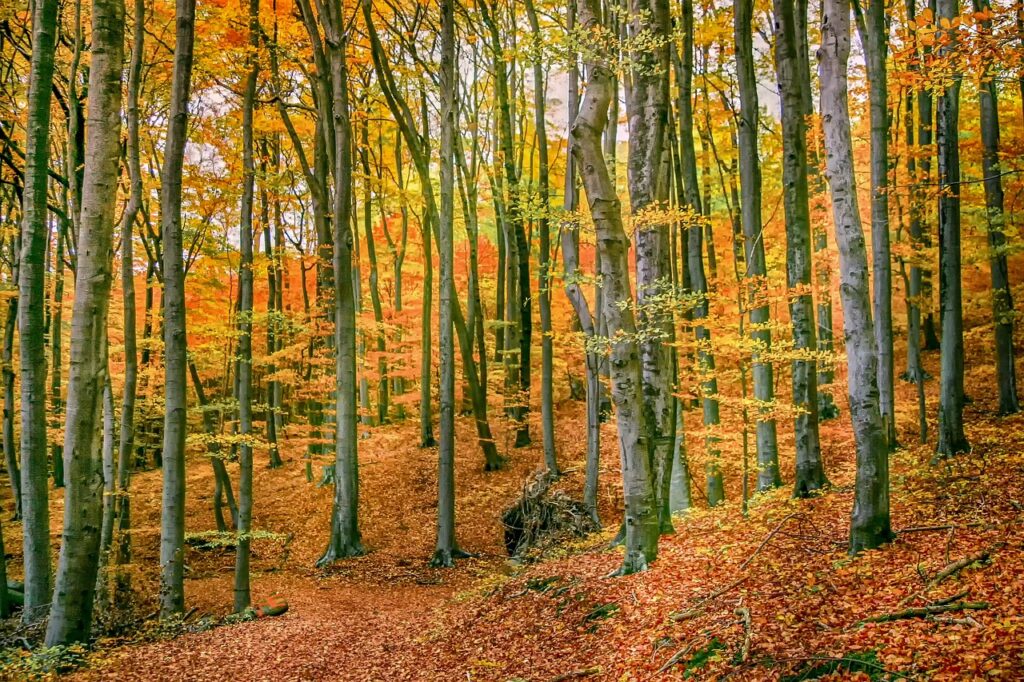
Plant Adaptations
- Broad-leafed trees shed leaves in winter months to conserve water.
- Roots grow deep to access moisture during dry season conditions.
- Woody vines climb taller trees to capture sunlight.
Animal Adaptations
- Black bears hibernate during the period of dormancy.
- White-tailed deer change coat thickness to endure cold winters.
- Birds migrate to warmer temperate regions during the harsh winter season.
Because these strategies are so effective, species have thrived across continents despite constant environmental pressure.
Human Impact and Cultural Importance
Since human history is closely tied to forests, deciduous woodlands have shaped societies.
Historical Uses
- Timber for housing, furniture, and fuel
- Wild foods including nuts, berries, and mushrooms
- Sacred and cultural sites linked to seasonal changes
Modern Importance
Today, deciduous forests provide recreational opportunities in NCR Parks and other protected zones. Moreover, eco-tourism and conservation education help communities recognize their value.
Facts About Deciduous Forests Scientific Insights
When scientists examine deciduous forests, important data emerges about climate systems, biodiversity, and sustainability. For example, studies on the average temperature fluctuations reveal how sensitive ecosystems are to climate change.
According to a Smithsonian report (2022), temperate forests absorb significant amounts of atmospheric carbon, highlighting their role in mitigating global warming. Therefore, protecting these ecosystems is not just about wildlife but about humanity’s future as well.
Fascinating Facts About Deciduous Forests
Because readers often want quick insights, here are some verified highlights:
- The temperate deciduous forest biome covers large portions of eastern North America, western Europe, and northeastern Asia.
- The height of the trees can reach up to 100 feet, with dense canopies providing shelter for countless species.
- Snow forests at the edge of polar regions sometimes overlap with deciduous areas, creating unique habitats.
- Subtropical deciduous forests in South America lose leaves during the dry season rather than in winter.
- Leaves of deciduous trees change color due to the breakdown of chlorophyll, revealing orange, red, and yellow pigments.

Conservation Efforts for Deciduous Forests
When awareness about environmental degradation increased, conservation initiatives gained momentum. Because facts about deciduous forests highlight their importance for biodiversity and climate stability, protecting them has become a global priority.
Protected Areas
National parks and reserves safeguard large areas of temperate deciduous forests. For example, NCR Parks in the eastern United States preserve habitats for white-tailed deer, black bears, and countless bird species. Moreover, these parks provide opportunities for education and eco-tourism, creating awareness about the need for protection.
Reforestation Projects
Because deforestation has significantly reduced coverage, reforestation projects aim to restore lost lands. By planting native broad-leafed trees, ecosystems gradually recover, ensuring that the forest floor regains its fertility. Furthermore, the canopy returns, attracting common animals that had once disappeared.
Global Collaboration
International organizations encourage cooperation between countries with temperate regions. As acid rain and climate change know no borders, collaborative policies address pollution, emissions, and land use practices. Therefore, global conservation is essential for long-term stability.
Educational and Cultural Value
Deciduous forests are not only ecological treasures but also sources of cultural inspiration. Because the leaves of deciduous trees change color every autumn, communities around the world celebrate seasonal festivals inspired by this transformation.
Learning in Nature
Schools and research institutions often use temperate forests as outdoor classrooms. Observing distinct seasons provides students with firsthand knowledge about cycles of growth, dormancy, and renewal. Moreover, understanding facts about deciduous forests encourages respect for natural systems.
Tourism and Recreation
In regions like western Europe and the eastern half of North America, tourism thrives during autumn when the forest turns brilliant shades of red, yellow, and orange. Hiking, photography, and wildlife watching are popular activities. Consequently, local economies benefit while awareness of forest protection increases.
Deciduous Forests and Climate Regulation

Because forests act as carbon sinks, they are crucial in regulating Earth’s climate. The temperate deciduous forest biome stores significant amounts of carbon in soil and vegetation. Moreover, seasonal shedding of leaves enriches the soil, creating a continuous cycle of renewal that sustains the ecosystem.
Impact on Air Quality
- Absorption of carbon dioxide
- Release of oxygen during photosynthesis
- Filtration of pollutants carried by cold air masses
Impact on Water Systems
Deciduous forests regulate rainfall through transpiration. Therefore, rivers and streams flowing through these areas remain balanced, supporting aquatic life.
Why These Forests Matter Today
Because of global challenges like climate change, biodiversity loss, and pollution, understanding facts about deciduous forests is more important than ever. Their survival ensures the well-being of countless species and provides stability for human communities. Moreover, they remind us of the interconnectedness between people and nature.
Facts About Deciduous Forests: Frequently Asked Questions
What makes deciduous forests unique?
Deciduous forests are unique because they experience four distinct seasons, and their trees shed leaves during the winter months or dry season.
Where are the largest temperate deciduous forests found?
They are primarily found in eastern North America, western Europe, northeastern Asia, and parts of South America.
Why do leaves of deciduous trees change color?
Leaves change color in autumn because chlorophyll breaks down, revealing pigments like red, orange, and yellow.
What are the main types of deciduous forests?
There are two main types: temperate deciduous forests and subtropical deciduous forests.
Which animals live in deciduous forests?
Common animals include black bears, white-tailed deer, foxes, and many bird and insect species.
How do deciduous forests affect the climate?
They regulate climate by storing carbon, moderating rainfall, and improving air quality.
What is the average temperature in a deciduous forest?
The average temperature is about 50°F (10°C), though summers can be much warmer and winters quite cold.
What threats do these forests face?
Deforestation, acid rain, and climate change are the most significant threats.
Additional Fascinating Facts About Deciduous Forests
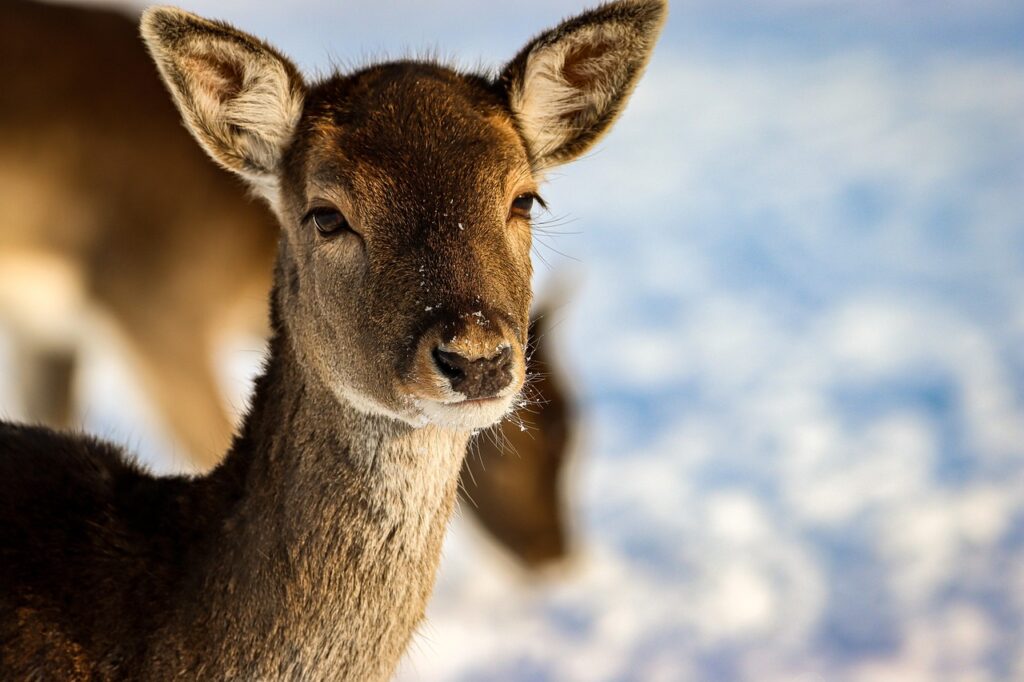
Because curiosity often drives deeper exploration, here are more compelling facts about deciduous forests that highlight their extraordinary complexity and value:
- Distinct seasons shape every aspect of life, from tree dormancy to animal migration.
- The temperate deciduous forest biome is one of the most studied due to its accessibility in populated temperate regions.
- Woody vines use tall trees as natural ladders, climbing toward sunlight to survive.
- Snow forests near polar regions sometimes transition into deciduous zones, creating mixed habitats.
- In South America, subtropical deciduous forests shed leaves during the dry season rather than in the winter season.
- Forest floors are incredibly rich with decomposers like fungi, which recycle nutrients.
- New leaves each spring symbolize renewal and provide food for herbivores after long winter months.
- Cold air masses influence weather patterns, creating sudden shifts in the winter months.
- The height of the trees ensures a layered ecosystem that supports birds in the canopy and mammals on the ground.
- Periods of dormancy are critical survival strategies for both plants and animals in temperate forests.
Facts About Deciduous Forests Conclusion
In reflecting on the many facts about deciduous forests, it becomes clear that these ecosystems are not only biologically diverse but also essential for human survival and cultural heritage. Because they regulate climate, store carbon, and sustain countless species, their preservation is vital. Moreover, their seasonal transformations—from the green color of spring leaves to the fiery hues of autumn—remind us of the resilience and beauty of nature’s cycles.
If you have some free time, it might be helpful to check out this article 54 Great Facts About Plantae: Change the Way You See Plants.
As threats like acid rain, climate change, and deforestation intensify, the need for conservation grows stronger. Fortunately, efforts through protected areas, reforestation projects, and global collaboration continue to protect these landscapes. Ultimately, deciduous forests remain symbols of renewal, endurance, and balance, inspiring both scientific inquiry and personal reflection.

